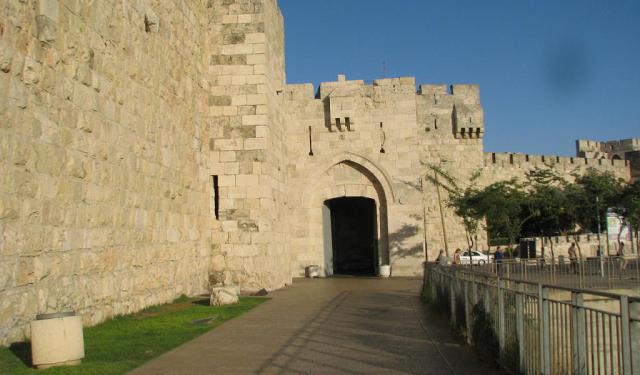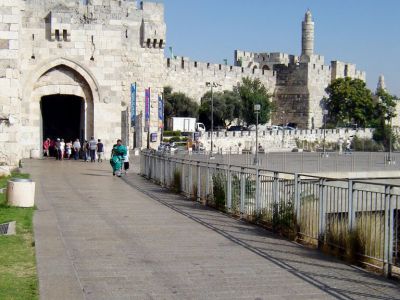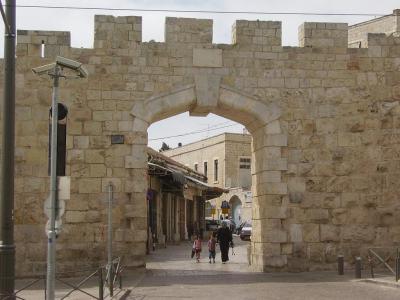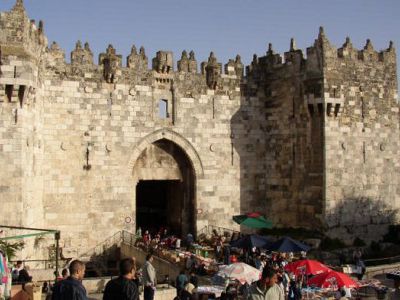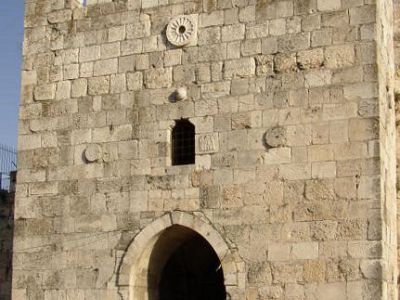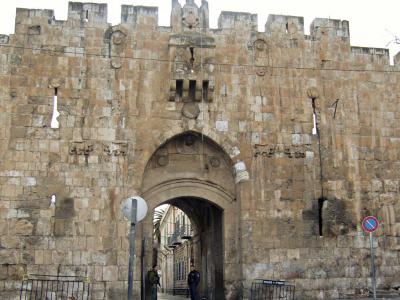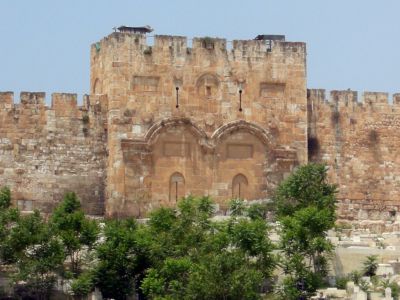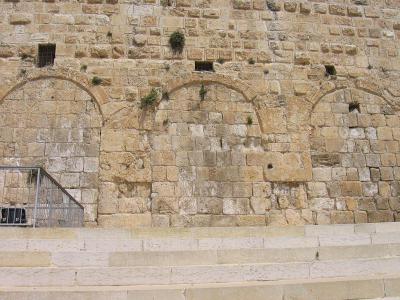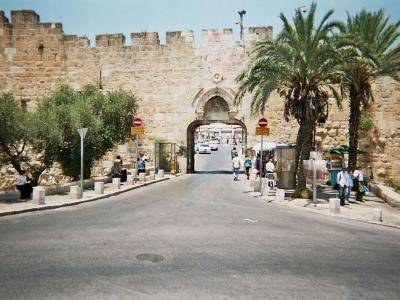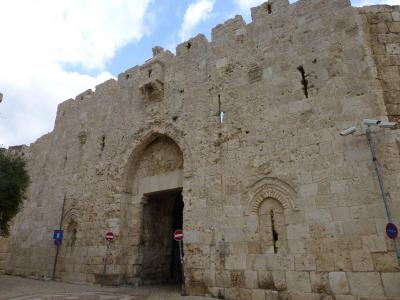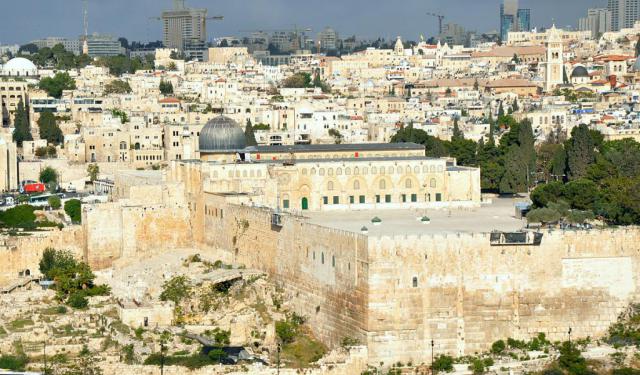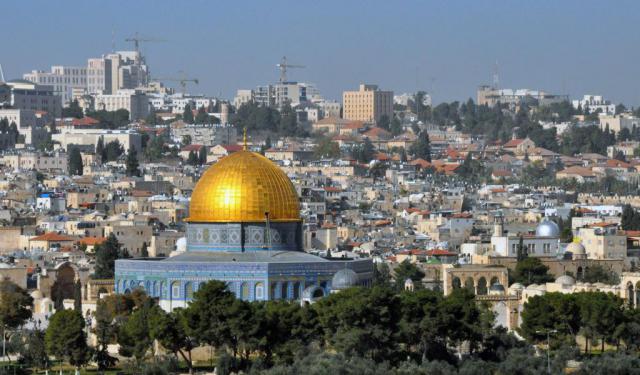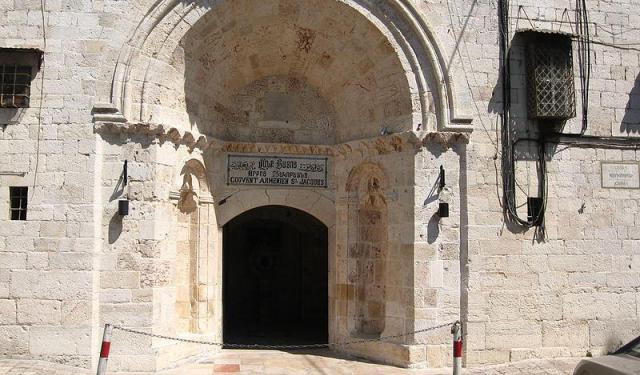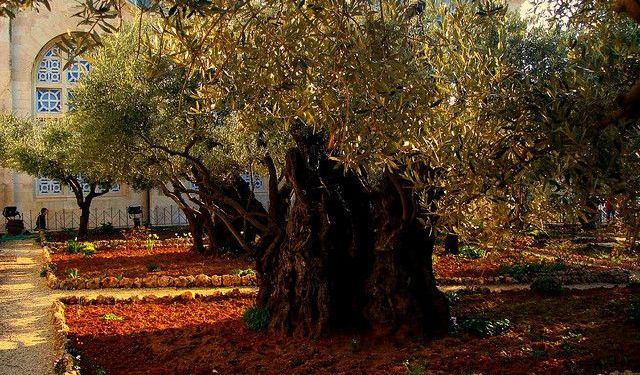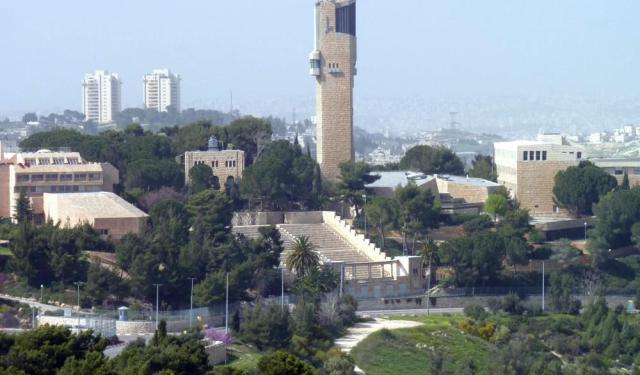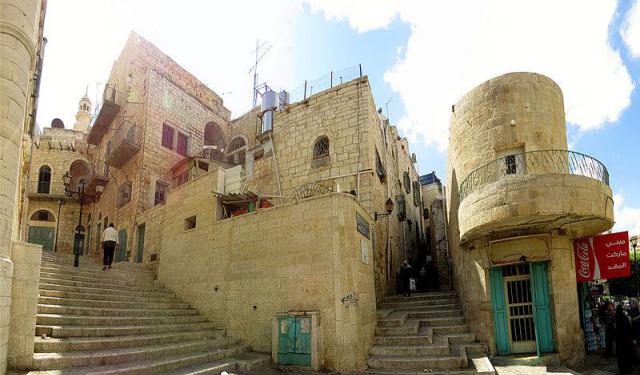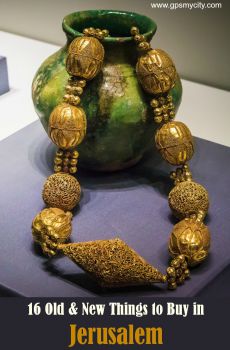Jerusalem City Gates Walking Tour (Self Guided), Jerusalem
Historians believe that the Old City of Jerusalem probably came into being more than 4,500 years ago. The defensive wall around it features a number of gates built on the order of the Ottoman sultan Suleyman the Magnificent in the first half of the 16th century, each of which is an attraction in its own right. Until as recently as 1870, they were all closed from sunset to sunrise; nowadays, just the section between Lions’ Gate and the Dung Gate is closed to the public.
Begin your walk with Jaffa – the busiest of the seven Old City gates, and the main one for both traffic and pedestrians coming from modern West Jerusalem. The old road to the town started here, and today this large gate one is the best place for visitors to access the ramparts and walk along the city walls. After climbing the steps immediately inside and paying admission, the ramparts pass over the New Gate, added in the 1880s to allow pilgrims direct access to the Christian Quarter, and the Damascus Gate – the grandest of all the Old City gates, providing a sort of opening to a microcosm of the Palestinian world with all its flurry of daily activity.
Between the Damascus Gate and the Zion Gate, you’ll find the Christian and Armenian quarters, on the right, and on the left, the Muslim Quarter and then the Jewish Quarter. Occasional vantage points allow you to look out across the Hinnom Valley below to the red rooftops of the early Jewish settlement of Mishkenot Shaananim, while the final stretch affords wonderful views of the Arab village of Silwan.
Our self-guided walking tour will lead you gate to gate, revealing all the mysteries and curiosities along the way. Put on some good shoes, stay hydrated and take photos that will be much different from everyone’s usual travel photos!
Begin your walk with Jaffa – the busiest of the seven Old City gates, and the main one for both traffic and pedestrians coming from modern West Jerusalem. The old road to the town started here, and today this large gate one is the best place for visitors to access the ramparts and walk along the city walls. After climbing the steps immediately inside and paying admission, the ramparts pass over the New Gate, added in the 1880s to allow pilgrims direct access to the Christian Quarter, and the Damascus Gate – the grandest of all the Old City gates, providing a sort of opening to a microcosm of the Palestinian world with all its flurry of daily activity.
Between the Damascus Gate and the Zion Gate, you’ll find the Christian and Armenian quarters, on the right, and on the left, the Muslim Quarter and then the Jewish Quarter. Occasional vantage points allow you to look out across the Hinnom Valley below to the red rooftops of the early Jewish settlement of Mishkenot Shaananim, while the final stretch affords wonderful views of the Arab village of Silwan.
Our self-guided walking tour will lead you gate to gate, revealing all the mysteries and curiosities along the way. Put on some good shoes, stay hydrated and take photos that will be much different from everyone’s usual travel photos!
How it works: Download the app "GPSmyCity: Walks in 1K+ Cities" from Apple App Store or Google Play Store to your mobile phone or tablet. The app turns your mobile device into a personal tour guide and its built-in GPS navigation functions guide you from one tour stop to next. The app works offline, so no data plan is needed when traveling abroad.
Jerusalem City Gates Walking Tour Map
Guide Name: Jerusalem City Gates Walking Tour
Guide Location: Israel » Jerusalem (See other walking tours in Jerusalem)
Guide Type: Self-guided Walking Tour (Sightseeing)
# of Attractions: 9
Tour Duration: 2 Hour(s)
Travel Distance: 3.7 Km or 2.3 Miles
Author: vickyc
Sight(s) Featured in This Guide:
Guide Location: Israel » Jerusalem (See other walking tours in Jerusalem)
Guide Type: Self-guided Walking Tour (Sightseeing)
# of Attractions: 9
Tour Duration: 2 Hour(s)
Travel Distance: 3.7 Km or 2.3 Miles
Author: vickyc
Sight(s) Featured in This Guide:
- Jaffa Gate
- New Gate
- Damascus (Shechem) Gate
- Herod's Gate
- Lions' Gate
- Golden Gate
- Huldah Gates
- Dung Gate
- Zion Gate
1) Jaffa Gate
The busiest among the seven gates of the Old City, this serves as the primary entrance for both traffic and pedestrians arriving from modern West Jerusalem via Mamilla. Despite its substantial size, the entrance tunnel is narrow and L-shaped, intentionally designed to impede the progress of attackers. Constructed during the reign of Suleyman the Magnificent, a dedication within the arch on the outside of the gate indicates the exact date of 1538.
Cars can access the Old City through this gate, a privilege attributed to Kaiser Wilhelm II's visit in 1898. Legend has it that the Ottoman authorities, mindful of the belief that every conqueror of the city must enter through here, created a breach in the wall between the gate and the Citadel. This allowed the Kaiser and his entourage to enter through the breach instead of the gate itself, which is on the north side of the breach. However, when General Edmund Allenby captured Jerusalem for the British in 1917, he famously declined to use the Kaiser's breach, opting instead to dismount along with his retinue and enter on foot through the gate, as a sign of respect to the city.
Known as Sha'ar Yafo in Hebrew and Bab al-Khalil in Arabic, the gate offers access to the ramparts, allowing visitors to walk along the city walls. Its various names reflect the diverse perspectives of Jerusalem's inhabitants: the English and Hebrew names allude to the ancient port city of Jaffa on the Mediterranean coast, known as an embarkation point for immigrants, pilgrims, and early tourists, while the Arabic name originates from the holy town of Hebron ("Al-Khalil"), signifying the old road leading to Hebron that commenced at this spot.
Cars can access the Old City through this gate, a privilege attributed to Kaiser Wilhelm II's visit in 1898. Legend has it that the Ottoman authorities, mindful of the belief that every conqueror of the city must enter through here, created a breach in the wall between the gate and the Citadel. This allowed the Kaiser and his entourage to enter through the breach instead of the gate itself, which is on the north side of the breach. However, when General Edmund Allenby captured Jerusalem for the British in 1917, he famously declined to use the Kaiser's breach, opting instead to dismount along with his retinue and enter on foot through the gate, as a sign of respect to the city.
Known as Sha'ar Yafo in Hebrew and Bab al-Khalil in Arabic, the gate offers access to the ramparts, allowing visitors to walk along the city walls. Its various names reflect the diverse perspectives of Jerusalem's inhabitants: the English and Hebrew names allude to the ancient port city of Jaffa on the Mediterranean coast, known as an embarkation point for immigrants, pilgrims, and early tourists, while the Arabic name originates from the holy town of Hebron ("Al-Khalil"), signifying the old road leading to Hebron that commenced at this spot.
2) New Gate
The New Gate stands as a unique addition to Jerusalem's Old City wall, diverging from the original 16th-century design. Erected in 1889 during the twilight of the Ottoman Empire, it holds historical significance distinct from the Second Temple's New Gate referenced in the Book of Jeremiah. Positioned at 790 meters (2,590 ft) above sea level, it represents the highest point along the Old City wall, serving as the swiftest pedestrian route between West Jerusalem and various quarters of the Old City.
Also referred to as “Bab es Sultan Abd ul Hamid”, the gate owes its existence to the Ottoman Sultan who acquiesced to the French Consul's plea for access to the Old City from the Notre Dame Hospice, completed in 1886. Additionally, it aimed to facilitate direct passage for Russian pilgrims residing at the Russian Compound to reach the Church of the Holy Sepulchre in the Christian Quarter.
Throughout the 20th century, the New Gate endured multiple assaults from various parties. In 1929, an unprovoked Arab attack resulted in the loss of several Jewish lives, while in 1945, an Israeli paramilitary group attempted to demolish a section of the adjacent wall (though their efforts were thwarted by a malfunction in the explosive device). During the 1948 Arab-Israeli war, a Jewish demolition charge intended for the gate was triggered by a stray artillery shell, igniting the Arab wooden barricade nearby. Subsequently, the gate was sealed off by the Jordanian occupation administration until its reopening in 1967 by the Israeli Army following the Six-Day War.
Also referred to as “Bab es Sultan Abd ul Hamid”, the gate owes its existence to the Ottoman Sultan who acquiesced to the French Consul's plea for access to the Old City from the Notre Dame Hospice, completed in 1886. Additionally, it aimed to facilitate direct passage for Russian pilgrims residing at the Russian Compound to reach the Church of the Holy Sepulchre in the Christian Quarter.
Throughout the 20th century, the New Gate endured multiple assaults from various parties. In 1929, an unprovoked Arab attack resulted in the loss of several Jewish lives, while in 1945, an Israeli paramilitary group attempted to demolish a section of the adjacent wall (though their efforts were thwarted by a malfunction in the explosive device). During the 1948 Arab-Israeli war, a Jewish demolition charge intended for the gate was triggered by a stray artillery shell, igniting the Arab wooden barricade nearby. Subsequently, the gate was sealed off by the Jordanian occupation administration until its reopening in 1967 by the Israeli Army following the Six-Day War.
3) Damascus (Shechem) Gate
Easily recognizable as one of the main entrances to the eastern part of Old Jerusalem, this gate stands out due to its monumental size and the constant activity surrounding it. As the most elaborate and fortified among the original seven gates, it features battlements, firing loopholes, and flanking turrets. Back in the day, the large opening above the entrance served to pour boiling oil or projectiles onto would-be invaders. Inside, the gate is designed with a double right-angle turn to further hinder hostile forces.
Named after the Syrian capital located 135 miles (or 220 kilometers) to the north, this structure has remained largely unchanged since its construction between 1537 and 1542 under the direct supervision of Ottoman Sultan Suleyman the Magnificent. Known as Bab el-Amud, or "Gate of the Column", by Arabs, it possibly references a large column topped with a statue of Emperor Hadrian that once stood within.
Built over remnants of the original Roman gate and parts of the Roman city, this gate offers access to archaeological excavations. Outside, steps lead to the excavation site where remnants of a Crusader chapel, a medieval roadway, and signs of the Roman 10th Legion's presence can be found. Further inside, the surviving arch of the Roman gate provides entry to the intriguing Roman Square Excavations. The original Roman plaza, marked with a gaming board engraved in the paving stones, serves as the starting point of the Roman Cardo. One can also observe a hologram depicting Hadrian's column in the main plaza.
Tip:
Starting point for the Ramparts Walk around Jerusalem's, offering routes towards the Lions' Gate in the east or the Jaffa Gate in the west.
Named after the Syrian capital located 135 miles (or 220 kilometers) to the north, this structure has remained largely unchanged since its construction between 1537 and 1542 under the direct supervision of Ottoman Sultan Suleyman the Magnificent. Known as Bab el-Amud, or "Gate of the Column", by Arabs, it possibly references a large column topped with a statue of Emperor Hadrian that once stood within.
Built over remnants of the original Roman gate and parts of the Roman city, this gate offers access to archaeological excavations. Outside, steps lead to the excavation site where remnants of a Crusader chapel, a medieval roadway, and signs of the Roman 10th Legion's presence can be found. Further inside, the surviving arch of the Roman gate provides entry to the intriguing Roman Square Excavations. The original Roman plaza, marked with a gaming board engraved in the paving stones, serves as the starting point of the Roman Cardo. One can also observe a hologram depicting Hadrian's column in the main plaza.
Tip:
Starting point for the Ramparts Walk around Jerusalem's, offering routes towards the Lions' Gate in the east or the Jaffa Gate in the west.
4) Herod's Gate
Herod's Gate, about 400 meters east of the Damascus Gate and north of the Via Dolorosa, is often overlooked by tourists, except for those venturing through to sample falafel or explore the local market frequented by residents for everyday necessities. The tranquil residential neighborhood within does indeed provide a glimpse into the Old City's quieter, less touristy side.
The English name, "Herod’s Gate", stems from a historical misconception dating back to 16th-century pilgrims who believed that the nearby monastery of Deir Abu Adas had once been the palace of King Herod Antipas. In Arabic and Hebrew, the gate is known as Bab el-Zahra and Shaar ha-Prakhim, respectively, meaning "Gate of Flowers", a reference to the rosette above the arch. In the past, this corner of the city housed the Jewish quarter until the Crusaders breached the walls nearby in 1099, leading to the slaughter of the Jewish inhabitants and their replacement with Syrian Christians.
Originally designed with a 90-degree turn to impede invaders, the gate was modified in 1875 to allow for a straight-through entrance, facilitating easier access. Adjacent to it stands the Burj al-Luqluq, or Stork Tower, constructed during the building of the city walls in 1537. While storks are no longer a common sight on the tower today, the area surrounding it has been home to a small community of Domari, also known as Gypsies, since the 19th century. The Domari people share a Rajasthani origin with the Romani people of Europe.
The English name, "Herod’s Gate", stems from a historical misconception dating back to 16th-century pilgrims who believed that the nearby monastery of Deir Abu Adas had once been the palace of King Herod Antipas. In Arabic and Hebrew, the gate is known as Bab el-Zahra and Shaar ha-Prakhim, respectively, meaning "Gate of Flowers", a reference to the rosette above the arch. In the past, this corner of the city housed the Jewish quarter until the Crusaders breached the walls nearby in 1099, leading to the slaughter of the Jewish inhabitants and their replacement with Syrian Christians.
Originally designed with a 90-degree turn to impede invaders, the gate was modified in 1875 to allow for a straight-through entrance, facilitating easier access. Adjacent to it stands the Burj al-Luqluq, or Stork Tower, constructed during the building of the city walls in 1537. While storks are no longer a common sight on the tower today, the area surrounding it has been home to a small community of Domari, also known as Gypsies, since the 19th century. The Domari people share a Rajasthani origin with the Romani people of Europe.
5) Lions' Gate
This gate on Jerusalem's eastern ramparts is known by multiple names. While commonly referred to as the Lions' Gate due to the pair of beasts flanking the entrance, it is also called Saint Stephen's Gate after the first Christian martyr who was stoned to death outside the city. His tomb was originally located near the Damascus Gate but was later relocated here for the convenience of Christian pilgrims.
In Arabic, the gate is known as Bab al-Ghor ("Jordan Valley Gate") or "Gate of Our Lady Mary", since the Virgin is believed to have been born just inside. Yet another Arabic name is Meshikuli, which in more modern terms would mean "wicket" – a small opening in a wall – through which, back in the day, people could observe approaching enemies and, in case of attack, pour boiling oil or tar onto their heads.
Legend has it that the emblematic lions flanking the gateway (although one school of thought insists that they are panthers) were originally symbols of the Mamluk sultan Baybars I and were placed there by Suleiman the Magnificent in celebration of his successful campaign to rid the Holy Land of Crusaders. Another story suggests that Suleiman had the panthers installed after dreaming that he would be eaten by lions if he didn't rebuild Jerusalem's ramparts.
Despite its age and historical significance, the Lions' Gate remains remarkably well-preserved, having never undergone restoration. Visitors should be prepared for crowds, particularly on Fridays when Muslims gather for prayer at the nearby Al-Aqsa Mosque.
In Arabic, the gate is known as Bab al-Ghor ("Jordan Valley Gate") or "Gate of Our Lady Mary", since the Virgin is believed to have been born just inside. Yet another Arabic name is Meshikuli, which in more modern terms would mean "wicket" – a small opening in a wall – through which, back in the day, people could observe approaching enemies and, in case of attack, pour boiling oil or tar onto their heads.
Legend has it that the emblematic lions flanking the gateway (although one school of thought insists that they are panthers) were originally symbols of the Mamluk sultan Baybars I and were placed there by Suleiman the Magnificent in celebration of his successful campaign to rid the Holy Land of Crusaders. Another story suggests that Suleiman had the panthers installed after dreaming that he would be eaten by lions if he didn't rebuild Jerusalem's ramparts.
Despite its age and historical significance, the Lions' Gate remains remarkably well-preserved, having never undergone restoration. Visitors should be prepared for crowds, particularly on Fridays when Muslims gather for prayer at the nearby Al-Aqsa Mosque.
6) Golden Gate
The Eastern Gate of the Temple Mount, commonly known as the Golden Gate, holds significant historical and religious importance for Jews, Christians, and Muslims alike. It is unique as the only eastern gate and one of the few entrances to Jerusalem from that side. While its construction dates vary, it is considered one of the oldest gates in the city, with origins dating back to as early as 520 AD.
Featuring a double entrance with two vaulted halls, the gate has been sealed and reopened multiple times by different rulers. Ottoman Sultan Suleiman the Magnificent sealed it shut in 1541, following closures by Muslims in 810 and reopening by Crusaders in 1102, and subsequent resealing by Saladin after defeating the Crusaders in 1187.
For Jews, the gate is associated with the Messiah's future entrance into Jerusalem and is also known as the "Gate of Mercy" due to the direct access it provided to what used to be the Jewish Temple. Christians associate it with the meeting of Mary's parents after the Annunciation and Jesus' entry on Palm Sunday. Muslims refer to it as Bab al-Dhahabi ("Golden Gate") or Bab al-Zahabi ("Gate of Eternal Life"), believing it will be the site of Allah's final judgment and resurrection.
Due to its importance to all three religions, the Golden Gate remains a history-rich and controversial site. While the Jews insist that Sultan Suleiman sealed off the gate to prevent the Messiah's arrival, others argue it was done for defensive reasons. Some even claim that the cemetery built in front of the gate by the Ottomans was intended to prevent a false Messiah or "Antichrist" from passing through.
From this spot, one can easily traverse to the Temple Mount and enjoy magnificent views across the Kidron Valley to the Mount of Olives. Alternatively, one can take a little hike into the lowlands to find the old trail to Bethany, or make way to the Garden of Gethsemane.
Featuring a double entrance with two vaulted halls, the gate has been sealed and reopened multiple times by different rulers. Ottoman Sultan Suleiman the Magnificent sealed it shut in 1541, following closures by Muslims in 810 and reopening by Crusaders in 1102, and subsequent resealing by Saladin after defeating the Crusaders in 1187.
For Jews, the gate is associated with the Messiah's future entrance into Jerusalem and is also known as the "Gate of Mercy" due to the direct access it provided to what used to be the Jewish Temple. Christians associate it with the meeting of Mary's parents after the Annunciation and Jesus' entry on Palm Sunday. Muslims refer to it as Bab al-Dhahabi ("Golden Gate") or Bab al-Zahabi ("Gate of Eternal Life"), believing it will be the site of Allah's final judgment and resurrection.
Due to its importance to all three religions, the Golden Gate remains a history-rich and controversial site. While the Jews insist that Sultan Suleiman sealed off the gate to prevent the Messiah's arrival, others argue it was done for defensive reasons. Some even claim that the cemetery built in front of the gate by the Ottomans was intended to prevent a false Messiah or "Antichrist" from passing through.
From this spot, one can easily traverse to the Temple Mount and enjoy magnificent views across the Kidron Valley to the Mount of Olives. Alternatively, one can take a little hike into the lowlands to find the old trail to Bethany, or make way to the Garden of Gethsemane.
7) Huldah Gates
The remains of two ancient gates on the southern wall of the Temple Mount in Jerusalem are known by archaeologists as the "Double Gate" and the "Triple Gate". Historically, these gates were referred to as the "Huldah Gates", named after the 7th-century BC prophet Huldah, one of only seven women prophets mentioned in the Old Testament, believed to have been buried in the City of David neighborhood (south of the Temple Mount).
With its three triple arches, the Western Huldah Gate served as the entrance for Jewish pilgrims entering the Temple Mount, while the double-arched Eastern Huldah Gate served as the exit for pilgrims leaving the temple complex. These gates provided direct access to the Temple Mount, guiding pilgrims through underground tunnels into the outer courtyard of the Jewish temple.
Visitors to Jerusalem today can still observe and walk on the remains of the monumental staircases attached to the Huldah Gates. Rising from the valley below, they symbolized an "ascent" to the divine realm, or a transition from the profane to the sacred. During significant Jewish festivals like Passover, it's estimated that hundreds of thousands of pilgrims would have ascended and descended these staircases, passing through the Huldah Gates on their way to and from the temple.
With its three triple arches, the Western Huldah Gate served as the entrance for Jewish pilgrims entering the Temple Mount, while the double-arched Eastern Huldah Gate served as the exit for pilgrims leaving the temple complex. These gates provided direct access to the Temple Mount, guiding pilgrims through underground tunnels into the outer courtyard of the Jewish temple.
Visitors to Jerusalem today can still observe and walk on the remains of the monumental staircases attached to the Huldah Gates. Rising from the valley below, they symbolized an "ascent" to the divine realm, or a transition from the profane to the sacred. During significant Jewish festivals like Passover, it's estimated that hundreds of thousands of pilgrims would have ascended and descended these staircases, passing through the Huldah Gates on their way to and from the temple.
8) Dung Gate
The Dung Gate, one of the gates in the walls of the Old City of Jerusalem dating back to the 16th century, is located near the southeast corner of the Old City, southwest of the Temple Mount. The less-than-flattering "dung", derived from the original Hebrew name Sha'ar Ha'ashpot, meaning "Gate of Garbage" or "Ash Pot Gate", reflects its historical role. During the time of the First Jewish Temple, waste and ashes from sacrifices were discarded through this gate into the Valley of Hinnom to be burned.
The original Dung Gate from antiquity may differ from the one built in the 16th century, which was initially quite small, resembling a doorway in a typical domestic house, and was only enlarged in 1952 under Jordanian rule to accommodate vehicular traffic. Despite expansion, it remains the smallest of all the Old City gates and retains its original Ottoman carved arch with a stone flower above.
Today, the gate serves as the main entrance and exit for the Jewish Quarter, providing convenient access to the Western Wall compound directly behind it. Additionally, it offers easy access to the City of David and Hezekiah's Tunnel, making it a crucial entry point for visitors to these significant historical sites.
The original Dung Gate from antiquity may differ from the one built in the 16th century, which was initially quite small, resembling a doorway in a typical domestic house, and was only enlarged in 1952 under Jordanian rule to accommodate vehicular traffic. Despite expansion, it remains the smallest of all the Old City gates and retains its original Ottoman carved arch with a stone flower above.
Today, the gate serves as the main entrance and exit for the Jewish Quarter, providing convenient access to the Western Wall compound directly behind it. Additionally, it offers easy access to the City of David and Hezekiah's Tunnel, making it a crucial entry point for visitors to these significant historical sites.
9) Zion Gate
Lying among the eight gates embedded within the Old City's fortifications, the Zion Gate, also known as David's Gate, serves as a direct passage into the Armenian and Jewish Quarters. If the tales of the famous Jewish king's burial here hold true, the name couldn't be more fitting. With its angular features crafted to thwart invaders, one can now traverse it in the opposite direction and 'invade' the Old City at any hour of the day. Besides, the walls along here are especially nice, offering splendid photo opportunities under the afternoon sun.
Constructed by engineers of Suleiman the Magnificent around 1540, this gate facilitated direct access from the city to the sacred sites atop Mount Zion. In the 19th century, the nearby vicinity gained notoriety as a gathering point for lepers. The battleground was particularly intense here in 1948, as Israeli soldiers struggled to breach the walls to relieve the besieged Jewish Quarter held by the Jordanians. Today, the gate's exterior bears witness to the ferocious combat, marred by numerous bullet holes. A short distance to the west, conspicuous damage to the base of the wall remains from the soldiers' attempts to blast their way through with explosives.
Constructed by engineers of Suleiman the Magnificent around 1540, this gate facilitated direct access from the city to the sacred sites atop Mount Zion. In the 19th century, the nearby vicinity gained notoriety as a gathering point for lepers. The battleground was particularly intense here in 1948, as Israeli soldiers struggled to breach the walls to relieve the besieged Jewish Quarter held by the Jordanians. Today, the gate's exterior bears witness to the ferocious combat, marred by numerous bullet holes. A short distance to the west, conspicuous damage to the base of the wall remains from the soldiers' attempts to blast their way through with explosives.
Walking Tours in Jerusalem, Israel
Create Your Own Walk in Jerusalem
Creating your own self-guided walk in Jerusalem is easy and fun. Choose the city attractions that you want to see and a walk route map will be created just for you. You can even set your hotel as the start point of the walk.
Jerusalem Old City Walking Tour
A UNESCO World Heritage Site since 1981, the Old City of Jerusalem is best explored on foot, since its narrow streets and alleys make it almost an entirely vehicle-free zone. In addition to hosting four ethnic quarters, – Jewish, Muslim, Christian and Armenian – it is packed with major historical and religious sites, which all make a trip here unique, unforgettable and not to be missed.
The... view more
Tour Duration: 3 Hour(s)
Travel Distance: 5.0 Km or 3.1 Miles
The... view more
Tour Duration: 3 Hour(s)
Travel Distance: 5.0 Km or 3.1 Miles
Muslim Quarter & Temple Mount Tour
The largest, most populous and perhaps most chaotic of all Jerusalem’s quarters, the Muslim Quarter is worth exploring for its unique atmosphere. Spending a day here may take you back to a simpler time, but be prepared for many sights and sounds as you pass many vendors, stores and restaurants on your way from site to site.
Some of the city’s most interesting city gates (Damascus and... view more
Tour Duration: 2 Hour(s)
Travel Distance: 2.1 Km or 1.3 Miles
Some of the city’s most interesting city gates (Damascus and... view more
Tour Duration: 2 Hour(s)
Travel Distance: 2.1 Km or 1.3 Miles
Armenian Quarter Walking Tour
Smaller and quieter than the Old City's other three quarters, the Armenian quarter contains a series of winding cobblestoned streets and alleyways teeming with people, shops, coffee stands, ceramic workshops and hookah bars. A city in miniature with distinct language, alphabet and culture, it has been in place since the 4th century, when Armenia adopted Christianity as a national religion.
... view more
Tour Duration: 1 Hour(s)
Travel Distance: 1.2 Km or 0.7 Miles
... view more
Tour Duration: 1 Hour(s)
Travel Distance: 1.2 Km or 0.7 Miles
Mount of Olives Walking Tour
Aside from affording great views over the Old City, the Mount of Olives is home to half a dozen major sites of the Christian faith along with the oldest Jewish burial ground in the world. Considered a holy spot by many, it is associated with numerous events in Jesus’ life including ascending to Heaven and teaching his disciples the Lord’s Prayer.
The following self-guided walking tour will... view more
Tour Duration: 1 Hour(s)
Travel Distance: 1.7 Km or 1.1 Miles
The following self-guided walking tour will... view more
Tour Duration: 1 Hour(s)
Travel Distance: 1.7 Km or 1.1 Miles
Mount Scopus Walking Tour
Dotted with many sightseeing places, Mount Scopus – translating as the “Observation Mount” from Greek – is a great place to get views over the whole Old City of Jerusalem on a nice day. The mount has been of major strategic importance since Roman times, with forces setting up camp here prior to laying the siege that culminated in the final Roman victory over Jerusalem around 70 AD.... view more
Tour Duration: 1 Hour(s)
Travel Distance: 2.3 Km or 1.4 Miles
Tour Duration: 1 Hour(s)
Travel Distance: 2.3 Km or 1.4 Miles
Bethlehem Walking Tour
Perched on a hill at the edge of the Judaean Desert, Bethlehem has been known to the world, for more than two millennia, as the birthplace of Jesus Christ. The “star of Bethlehem” as well as Christmas carols and hymns are firmly associated with this ancient city in the West Bank, Palestine, and thus, for some visitors, the bustle of a modern city may come as a surprise.
Undoubtedly, the... view more
Tour Duration: 1 Hour(s)
Travel Distance: 1.5 Km or 0.9 Miles
Undoubtedly, the... view more
Tour Duration: 1 Hour(s)
Travel Distance: 1.5 Km or 0.9 Miles
Useful Travel Guides for Planning Your Trip
16 Uniquely Israel Things to Buy in Jerusalem
Modern day Jerusalem is a mosaic of neighborhoods, reflecting different historical periods, cultures, and religions. The influx of repatriates in recent years has made the cultural and artisanal scene of the city even more colourful and diverse. To find your way through Jerusalem's intricate...
The Most Popular Cities
/ view all
